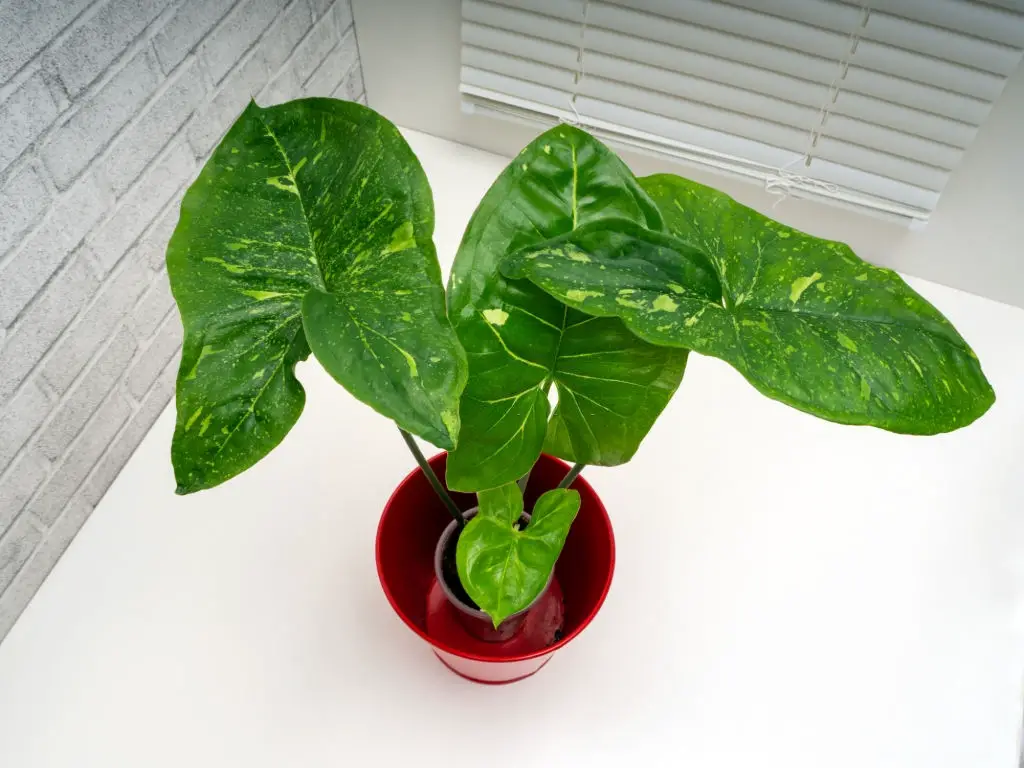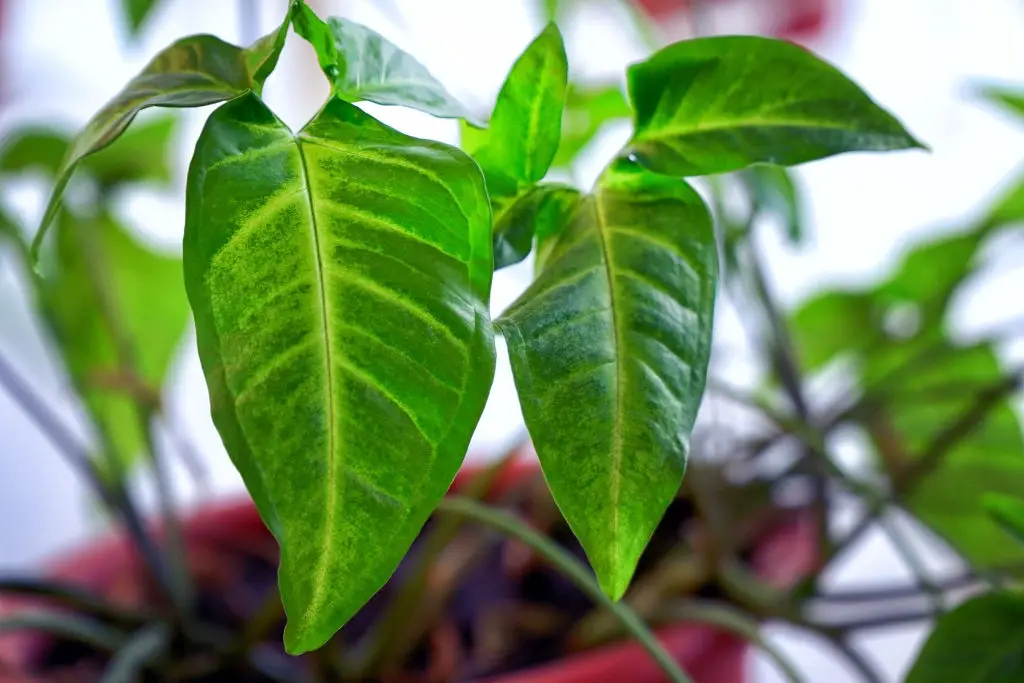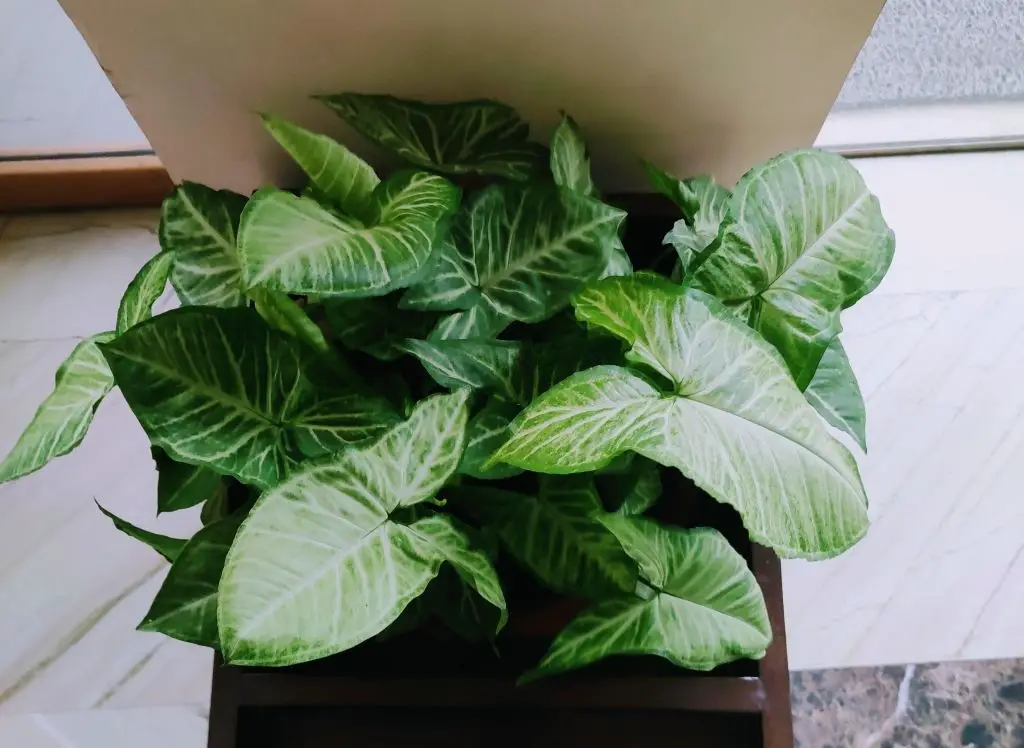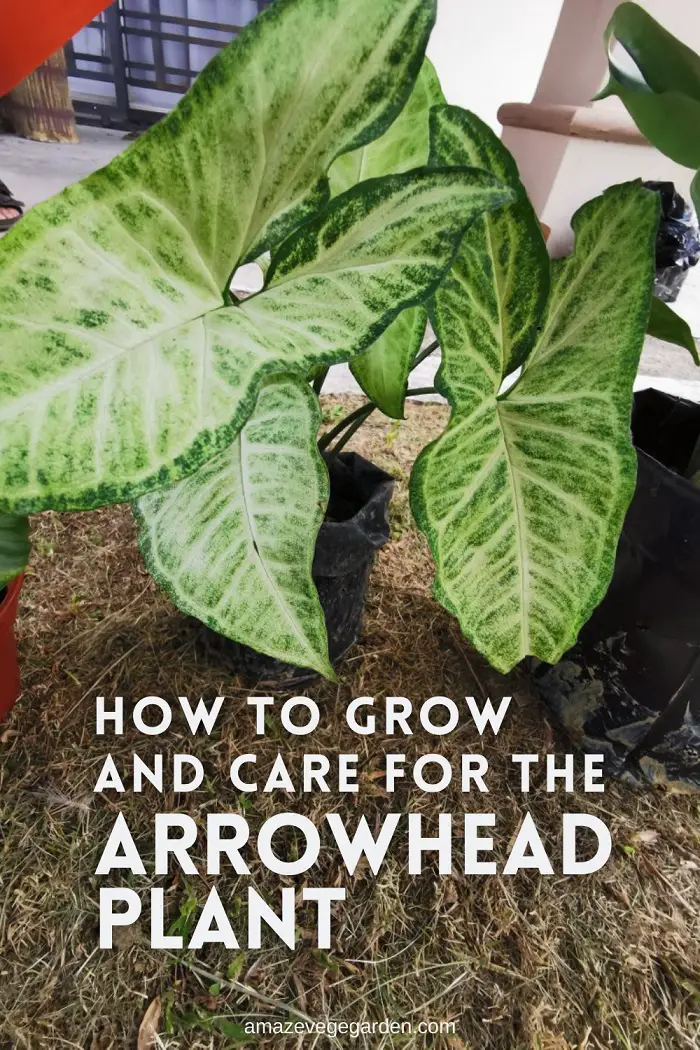Arrowhead plants have a charming decorative factor for indoor gardens, in addition to their ability to grow well in medium to low-light environments. Native to Latin America, the arrowhead plant grows in various colors, including dark green, lime green, pink and green, and white and green. What would be the best way to grow this plant that can maintain its high-end beauty?
Growing and caring for your arrowhead plants need the utmost attention during the planting stage, where it is best to plant stem cuttings. Then as the plant grows after repotting it, you should ensure you have the appropriate humidity, water, temperature, and light environments for the plant.
Arrowhead plants can have pretty fast growth rates essential for their beautification purposes. However, you may encounter several problems when growing and caring for the plant. Make sure you read ahead for more up-to-date details on arrowhead plants.
Where Should Arrowhead Plants Be Planted?
As long as you provide your arrowhead plants with mid-drying and moist soil, they can tolerate average humidity at home. These plants originate from tropical rainforests in South and Central America.
Moreover, mature arrowheads grow large leaves and can trail into climbing stems, so you’ll need an environment that’s tolerant of their maturation stages. However, these features depend on whether you are buying a mature plant or a young plant.
The plant will also need medium to bright light; although it can tolerate any low amount of light, you should make sure you do not have the plant in areas with increased light frequencies. Therefore, generally, you might need to have a wet pebble tray for the plant to ensure a conducive humidity-filled environment.
You might also need to take advantage of specific places around your home that can have an assured average home temperature ranging from about 65°F-75°.
Soil Requirements
Arrowhead plants are easy to grow, but they do have specific soil requirements. The ideal option for growing these plants is a nutrient-rich, organic potting mix amended with sphagnum peat moss and perlite. This will provide the perfect combination of drainage and moisture retention that the arrowhead plant needs in order to thrive.
When planting outdoors, you should use a rich topsoil or garden loam mixed with compost. Your soil should be moist but not soggy; too much water can cause root rot and kill your plant. If your soil tends to dry out quickly, consider adding mulch around the base of your plant to help retain moisture.
One of the reasons you should avoid making your plant containers overly wet even in spring and summer is because of the plant’s susceptibility to root rot. The rotting is also a result of using poorly drained containers or using clogged soil for the plant.
Therefore, it is best to obtain potting soil for your arrowhead and other indoor plants as well. This soil is specifically essential for the support and assured nourishment of your plant. With the appropriate type of soil, you can be sure of easy bagging. For a healthy plant, you should flush its soil once a month with tap water during maintenance. Flushing the potting soil is crucial for washing out excess salts from accumulated fertilizers.
You might also need to choose your gardening containers wisely since poor containers clog and hold too much water in the soil. The best containers come from clay or terracotta vessels for their perfect ability to wick excess moisture from the potting soil.
Sunlight Requirements
Arrowhead plants thrive in bright, indirect sunlight. They can tolerate some direct sun, but too much will scorch the foliage and cause them to become weak and droopy. To ensure your arrowhead plant receives the proper amount of light, place it near a window that gets lots of natural light throughout the day. Avoid placing it directly in front of a south-facing window as this may be too harsh for the delicate leaves.
When grown indoors, make sure to rotate your arrowhead plant once every few weeks so all sides receive sufficient amounts of light. This is important for promoting even growth among all its branches and leaves. If you find that one side of your plant has more foliage than the other, simply turn it around so each side receives an equal amount of sunlight.
In addition to providing adequate lighting, you should also check regularly if any yellowing or discoloration appears on the leaves due to overexposure or lack of enough sunshine. Adjust accordingly by adding additional shade or moving towards a brighter spot depending on what you observe with your plant. With careful monitoring and appropriate adjustments made when needed, you can easily provide your arrowhead with just the right amount of sunlight needed for optimal health and vigor!
Watering Schedule
Watering an arrowhead plant is essential to its growth and health. Generally, it’s best to water the plant more frequently in summer months, when temperatures are higher and humidity levels lower. Aim for a regular watering schedule of two times per week during this period. In winter, you can reduce your watering to once a week or every other week.
However, make sure not to let the soil dry out completely between watering sessions. The soil should be kept moist but not soggy; if it feels damp at knuckle-depth after you’ve watered, that’s ideal.
Spring and summer are the best times to water arrowhead plants differently than winter because they grow naturally in tropical rainforests. However, you should avoid keeping the plants extra wet in those warm months. You need to try and maintain a partially dry and damp environment.
Advisably, if you won’t be home for a week or so, it is best to use a pebble tray board that holds and maintains the necessary water and humidity levels for the plant.
Fertilizer
You should ensure the spring and summer seasons have plants fertilized at least once a month. However, you might need to make sure you use liquid fertilizer because it’s much easier for the plant to seep through the soil. Although fertilizer in crystal forms can also seep into the potting soil, the such type might not dissolve uniformly in the soil.
Fertilizing your arrowhead plant is essential to its health and growth. The best way to do this is by using a balanced fertilizer that contains nitrogen, phosphorus, and potassium. A good rule of thumb for how often you should fertilize the plant is once every two weeks during the growing season and once per month in winter. Here are some tips on fertilizing your arrowhead plant:
- Use water-soluble fertilizer applied directly at the base of the plant when watering it.
- Make sure to read the instructions on whatever product you choose to use as each one will vary slightly in the application method.
- Test soil pH levels prior to applying any fertilizer; acid-loving plants like arrowheads prefer acidic soils with a pH level lower than 6.5.
- Apply no more than what’s recommended or else you risk burning the roots of your plant!
When feeding your arrowhead, try not to overdo it – too much food can be just as bad as none at all! Provide enough fertilizer so that your beautiful foliage remains lush and healthy throughout the seasons, but don’t go overboard with it either.
Pruning Techniques
Pruning arrowhead plants is a great way to keep them healthy and happy. It’s important to prune away any dead or dying leaves, as well as remove any shoots that are leaning too far out of the center of the plant. Regular pruning of your arrowhead can also help it maintain its shape and size, ensuring optimal growth over time.
When pruning an arrowhead plant, use sharp scissors or shears for clean cuts at the stem nodes. Make sure not to cut too deeply into the node itself, as this could cause damage and disease within the plant. Additionally, be careful not to leave stubs when cutting off stems; these can prevent new growth from forming properly. For best results, angle your cut so that just above where you made the cut there’s still some foliage left on the stem. This will encourage more vigorous growth in each of those areas later on.
You should pay close attention to how much you’re pruning your arrowhead at one time—over-pruning can lead to both stunted growth and weakened root systems which makes them susceptible to pests and diseases. A good rule of thumb is never to take more than ⅓rd of any given shoot away in a single session so that your plant continues growing strong without interruption. As long as you follow these steps carefully and consistently, you’ll have no problem keeping your arrowhead healthy through regular pruning sessions.
Managing Weeds
Weeds can be a nuisance when trying to grow an arrowhead plant. To ensure the health of your plants, weeding should occur regularly and persistently throughout their growth cycle. Weeds compete with plants for nutrients and water, so it’s important to remove them as soon as possible. If weeds are left unchecked, they can even cause stunted or weakened growth in the arrowhead plant.
To prevent weed growth around your arrowhead plants, start by removing any existing weeds before planting. This is best done through physical removals, such as pulling up the root systems or hoeing them out of the soil surface. Also, make sure to keep mulch away from the base of the plant because this creates a hospitable environment for weed seeds to germinate and thrive.
In addition, practice proper irrigation techniques when watering your arrowhead plants to avoid accidentally spreading weed seeds into other areas that have not yet been treated. With consistent effort over time, you’ll be able to successfully manage weed populations and enjoy healthy-looking arrowhead plants all season long!
Common Diseases And Pests
Once your arrowhead plant has been pruned and is growing well, it’s important to recognize the potential for disease or pests that can affect its health. To ensure optimal growth, take steps to protect your arrowhead from common diseases and pests.
A delightful array of fungal issues can arise in an arrowhead plant if given the chance. Mildew, blight, rusts, leaf spots, and root rot are all possible problems you may encounter while caring for your plant. In order to prevent these infections, provide adequate airflow around the foliage through regular pruning and spacing out plants when necessary.
Watering only at ground level and avoiding overhead irrigation can help reduce moisture-related conditions that could lead to infection. If any signs of a fungal issue do appear on the leaves or stems of your arrowhead plant, be sure to contact a professional horticulturist as soon as possible for treatment recommendations specific to this particular species.
Insects also pose risks to an arrowhead’s well-being; aphids, mealybugs, mites, and caterpillars are just some of the creepy crawlers who might pay a visit if proper precautions haven’t been taken. To deter unwelcome guests from settling into your garden space start by planting companion flowers nearby: marigolds attract beneficial insects like ladybugs which feed on other pesky critters! Additionally use natural insecticides such as neem oil or diatomaceous earth soaps; both have proven effective in warding off unwanted visitors without posing harm to humans or pets alike.
The arrowheads can also be a perfect plant for anyone with a busy schedule around the home that you tend to forget about gardening around their home. Therefore, in your caring for them, you may need to make sure you meet the following factors to provide the arrowhead plants with a straight and comfortable environment.
Support Poles
Part of your arrowhead plants’ beauty within the home is their climbing nature that uses designed poles such as moss sticks. These are crucial for maintaining their upright stems. Because most arrowheads are grown indoors, it is essential to use a support stick. Support sticks help to support the stems, as well as complement the plant’s color and type. In addition to the moss stick, Coco fibers are also some of the best ornamental poles.
How Can I Make My Arrowhead Plant Grow Faster?
Your choice of planting the arrowhead plant determines its growth rate from the time you pot the plant. Advisably it is best to propagate stem cuttings and place them in water until they develop visible roots. Once the arrowhead roots have grown, you can go ahead and plant the rooted cuttings into your best drainage containers.
An additional advantage of propagating the stem cuttings is an assured new plant matching the mother plant’s genes. So you can scout for the best arrowhead that interests you more. Additionally, you can also propagate arrowhead plants from seeds but, it may produce a different color from the original plant.
The fast growth rates in these plants can also call for your attention to report them to larger pots sooner than expected. So, in addition to getting a larger gardening pot, you should also ensure you do not rootbound your plant to promote eased fast growth. Therefore, by root pruning, you should align your plant for continued life of the plant in a new pot.
How Should Arrowhead Plants Be Cared for?
Arrowhead plants can grow at high rates if the right conditions are met. Their leaves begin as simple arrows and mature into deeply divided leaves. The plant pleasures and thrives best without competition for essential nutrients from other arrowhead plants or close species plants.
Propagation Methods
Propagation of the arrowhead plant is an exciting and rewarding process. It can be done through a variety of methods, all of which are outlined below:
- Division – Divide existing clumps by carefully cutting apart the roots with sharp shears or a knife to create multiple plants from one larger original.
- Leaf Cuttings – Place individual leaves in water or directly into moist soil and keep them warm until they develop small root systems. Once these have formed, you can separate them into new plants.
- Stem Cuttings – Cut off young stems containing several nodes (leaves) on each stem segment and place them in water or moist soil; roots should begin developing within two weeks.
- Offsets & Runners – Carefully cut away any offsets (small plantlets growing along the side of the main stem) and runners (long stems that reach out to form new plants), then replant them as new specimens.
- Air Layering – Most commonly used for larger varieties that don’t respond well to other propagation techniques, air layering involves partially severing a branch at its base while still attached to the parent plant, wrapping it in damp sphagnum moss before potting up separately once rooted.
No matter what method you choose, make sure your environment is conducive for successful propagation – light levels should be bright but indirect, and temperatures moderate between 65–75°F (18–24°C). Keep humidity high around newly propagated starts by misting frequently or placing potted plants inside plastic domes/bags during this critical time period. With patience and practice, you will soon become an expert propagator!
Troubleshooting Common Issues
It’s easy to fall in love with an arrowhead plant. With its elegant, arrow-shaped leaves and trailing stems, it adds a touch of beauty to any home or office. But caring for this gorgeous houseplant can be challenging—especially when things go wrong. Luckily, diagnosing and troubleshooting common issues isn’t as hard as you might think.
To start, inspect your arrowhead plant carefully: look at the leaves, stem, soil condition, and overall health of the plant. If the lower leaves are turning yellow or brown, that could mean too much water is being used (or not enough). If infected spots appear on the foliage or white fuzz appears near the base of the stem, your arrowhead may have been exposed to mold spores from wet soil or humid air. Finally, if strange bumps form along the stem or roots become visible through drainage holes in the pot, these could be signs of root rot caused by overwatering.
The good news is that most problems can easily be fixed with some basic horticultural care techniques like adjusting watering schedules and repotting into fresh soil. The key is proper diagnosis so you know how to treat each issue effectively – no matter what challenges arise!
Repotting Considerations
Now that we have addressed common issues with the arrowhead plant, it is important to understand how and when to repot. Repotting should be done every two years or so, as this will provide a healthy environment for the plant’s growth. It also allows you to clean out any old soil and replace it with fresh potting mix.
When selecting a new pot, make sure it has plenty of drainage holes at the bottom; clay pots are ideal due to their breathable nature. Additionally, if the roots have become too large for their container, then replanting into a bigger container is necessary in order for the root system to receive adequate space and nutrients.
When repotting an arrowhead plant, use caution not to damage any of its existing roots. Gently remove it from its original pot and place it in its new one before adding more soil around its base. Water thoroughly after planting and keep away from direct sunlight until established in its new home.
Winter Care Tips
Winter care for the arrowhead plant is essential. It’s important to keep in mind that this species of plant is a tropical one and prefers warmer temperatures, so extra attention should be given when the weather outside turns cold. The first step during winter months is to move it indoors if necessary. Make sure that you choose an area with enough natural light or supplement it with artificial lighting such as fluorescent bulbs. Additionally, make sure to provide adequate humidity by misting the leaves regularly or providing moisture trays filled with pebbles and water beneath the pot.
It’s also very important to monitor your arrowhead plants’ soil condition when keeping them indoors during winter. To do this effectively, only water when the top 2 inches of soil are dry – too much or too little can cause damage to the root system and lead to stunted growth or even death of the plant.
You may need to adjust the watering frequency depending on temperature fluctuations inside your home. Lastly, fertilizing isn’t usually necessary during these cooler months unless new growth has begun; then apply once every two weeks at half strength from mid-fall through early springtime.
Companion Plants For The Arrowhead Plant
As the cold winter winds die down, it’s time to think about companion plants for your arrowhead plant. Like a symphony of colors and textures, companion planting can bring out the best in both plants by encouraging healthy growth.
When selecting companion plants for an arrowhead plant, here are some things to consider:
- Shade-tolerance: Look for other shade-tolerant species such as Impatiens and Coleus that will thrive alongside the Arrowhead.
- Soil conditions: Choose companions with similar soil preferences such as Caladiums or Begonias which prefer wetter soils than most other houseplants.
- Color palette: Consider color palettes when choosing companions; brightly colored flowers like Petunias or Geraniums pop against the dark green foliage of the Arrowhead.
Creating a dynamic combination of complementary yet contrasting colors and shapes is key to achieving harmony between different types of plants. When done well, there is no limit to how harmonious these combinations can be.
How To Harvest And Use Arrowhead Plant Leaves
When harvesting arrowhead plant leaves, it’s important to do so with care. Start by using sharp scissors or a pruning shear and cutting just above the node of the leaf stem. This will ensure that no damage is done to the stems while also providing plenty of foliage for use in recipes. After cutting, rinse off any dust or dirt from your harvested leaves before drying them completely.
Once dried, you can store the leaves in an airtight container in a cool, dark place until you’re ready to use them. To prepare them for cooking, lightly coat each side with oil and then lay them out on a baking sheet at 350 degrees Fahrenheit for 15 minutes – this will crisp up their texture as well as intensify their flavor.
Arrowhead plants have many culinary uses such as adding color and texture to salads or stir-fries, making pesto sauces, flavoring soups and stews or even being used as part of a pickling process. Their slightly nutty taste pairs beautifully with other ingredients like garlic, onions, or tomatoes; so don’t be afraid to experiment! With their versatility and wonderful flavors, arrowhead plant leaves are sure to add something special to whatever dish you make with them.
Did you find this post useful? Would you like to get back to it later? Save THIS PIN below to your house plant or indoor gardening boards on Pinterest! Thanks




